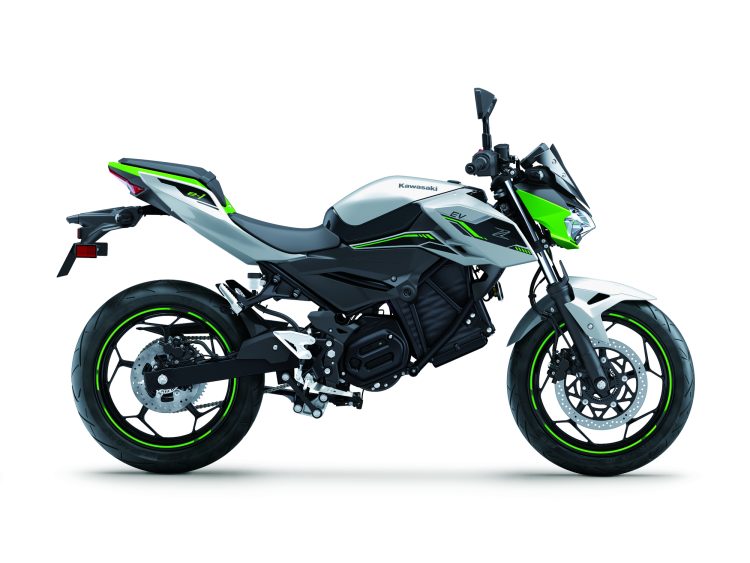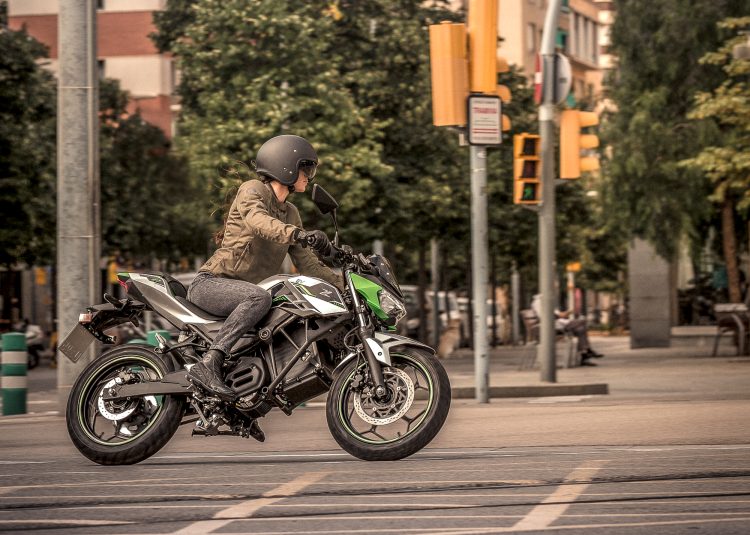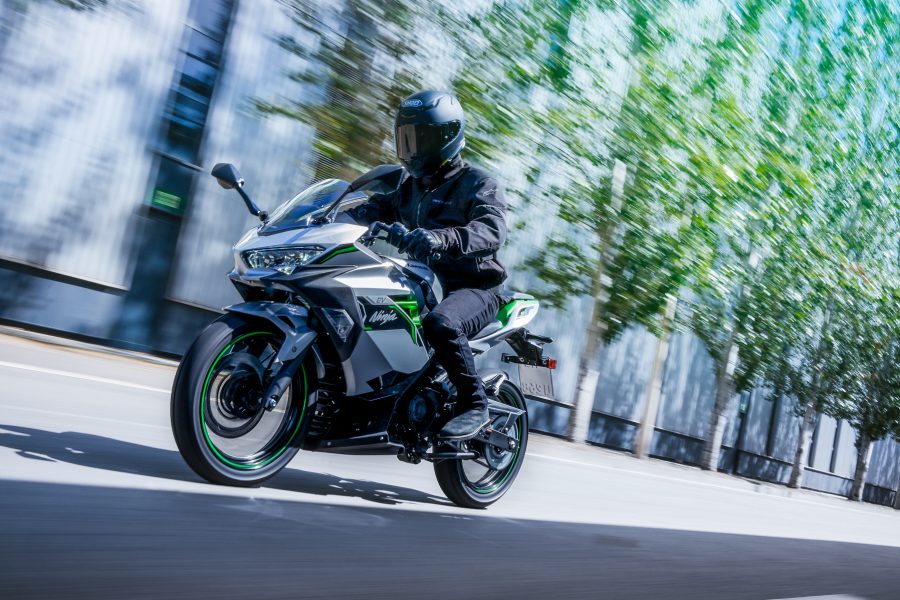After months of teasing, Kawasaki has indeed made good on its promo campaign and introduced two electric motorcycles to North America. For 2024, the new Kawasaki Ninja e-1 and Z e-1 will come to the US and Canada offering urban mobility at pricing below the MSRP of much of the battery bike competition.
Kawasaki Ninja e-1
The Ninja brand has been Kawasaki’s flagship series of bikes since the 1980s (sorry, KLR fans), so it makes sense to hang the Ninja badge on these new battery bikes. However, these new EVs are made for utility, not for racing.
Kawasaki says the Ninja e-1 has a brushless electric motor that makes 9 kW, or roughly 12 hp, at its peak; normal running power is 5 kW, or just under 7 hp. We’ve seen no mention of torque yet, but the bike will have all that muscle available instantaneously, as electric motors deliver all their torque right away, without having to build power as the rpms climb. This is good for city traffic, which is where the new Kawis are made to run.
The motor on the e-1 line comes with Kawasaki’s E-boost, which allows you to make max power from the engine for 15 seconds, enough time for a quick hop from a traffic stop or a pass. Other electric motorcycles have a similar feature; the idea is that the electric motor can be made to run hard for a brief period of time without overheating or putting other unmanageable stress on it. It also means you can’t deplete the batteries quickly from running flat-out for mile after mile.

The Kawasaki Ninja e-1 has modest power, and is not meant for sustained highway riding. Top speed in Road mode is 51 mph; hitting the E-boost will give you an extra 8 mph for 15 seconds. Photo: Kawasaki
Speaking of batteries: The Ninja e-1 comes with two removable 30 ah batteries. Why two? Kawasaki’s PR says they’re only 25 pounds apiece, so they’re easily removed from the bike and carried inside for charging. Many riders will find two trips at 25 lb apiece are easier than a single trip lugging a 50-lb battery.
Those batteries recharge from a standard 110V wall socket; they will go from 0-100 percent charge in 3.7 hours. Kawasaki claims a 20-85 percent charge in only 1.6 hours.
Once you’re on the open road, Kawasaki says range is as high as 41 miles on a single charge, which presumably includes city riding. Stop-and-go traffic will make your batteries last longer, as the Kawis come with regenerative braking. Hit the binders, and some of that energy is fed back into your battery.

Here is the Kawasaki Z e-1. Note that many of the parts on the chassis come from the Ninja 300 or Z400 models. Photo: Kawasaki
As far as speeds: The Ninja e-1 will run at a top speed of 36 mph in Eco mode, which conserves the battery. In Road mode, the bike tops out at 51 mph. Hitting the E-boost will add 8 mph to your top speed in either mode, but again, that’s only for a few seconds of riding.
The motor on the Ninja e-1 has a twist-and-go throttle with no gearbox, but interestingly, it does come with a Walk mode. This is supposed to make it easier to move your machine around, and even includes a reverse gear for that use.
The Ninja e-1 weighs just over 308 lb, and has a $7,599 MSRP in the US ($9,499 in Canada).

Although these bikes are commuter-oriented, Kawasaki is working on alternative-energy machines that have potential for a lot more usefulness outside city limits. Photo: Kawasaki
Kawasaki Z e-1
The Z e-i has most of the same features as the Ninja—the only real difference is the bodywork, which cuts some of your top speed capability. Otherwise, it’s the same motor, the same chassis (mostly borrowed from Kawasaki’s Z-series of internal combustion models). The same 4.3-inch TFT screen, the same 5-liter storage compartment where the gas tank usually sits. With a smaller fairing, it weighs a little less than the Ninja e-1, at 298 lb. The price tag is also lower—MSRP in the US is $7,299 ($9,199 in Canada).
Other alternative fuel offerings
These machines have specs that are underwhelming to speed junkies and other experienced riders, but they come into the market at lower prices than a lot of the EV competition (indeed, a competitor notably announced a price cut almost immediately upon the launch of these new Kawis). But these bikes are just the start of Kawasaki’s push outside the world of traditional gasoline-powered internal combustion engines.
Along with these EVs, Kawasaki also had hybrid gas/electric and hydrogen-fuelled prototypes on display at EICMA last year (read about themhere). Those platforms will also lack the performance of the latest-generation internal combustion machines, but as they develop, they may offer the muscle that riders see lacking in the e-1 series.







